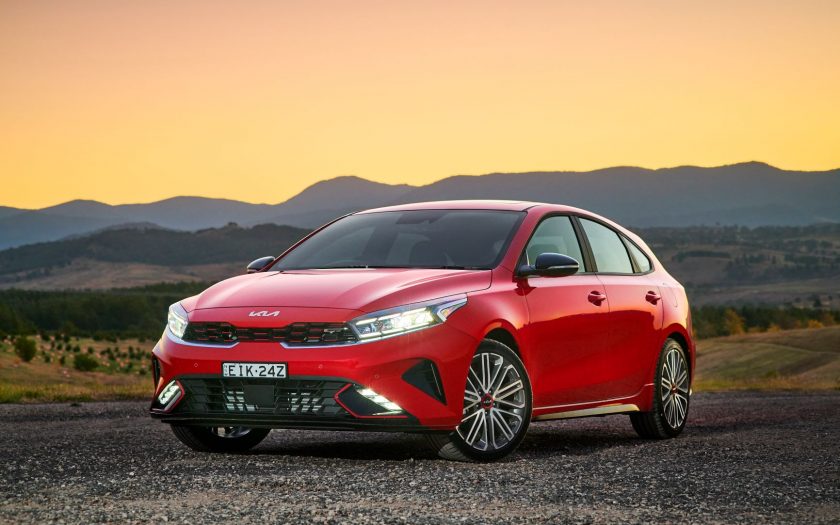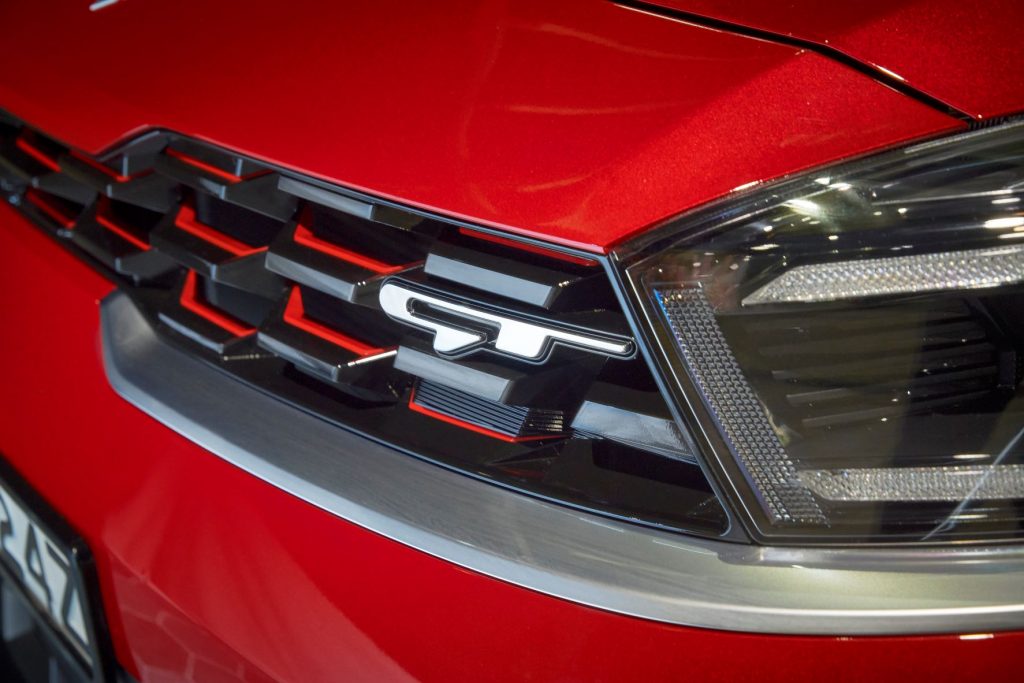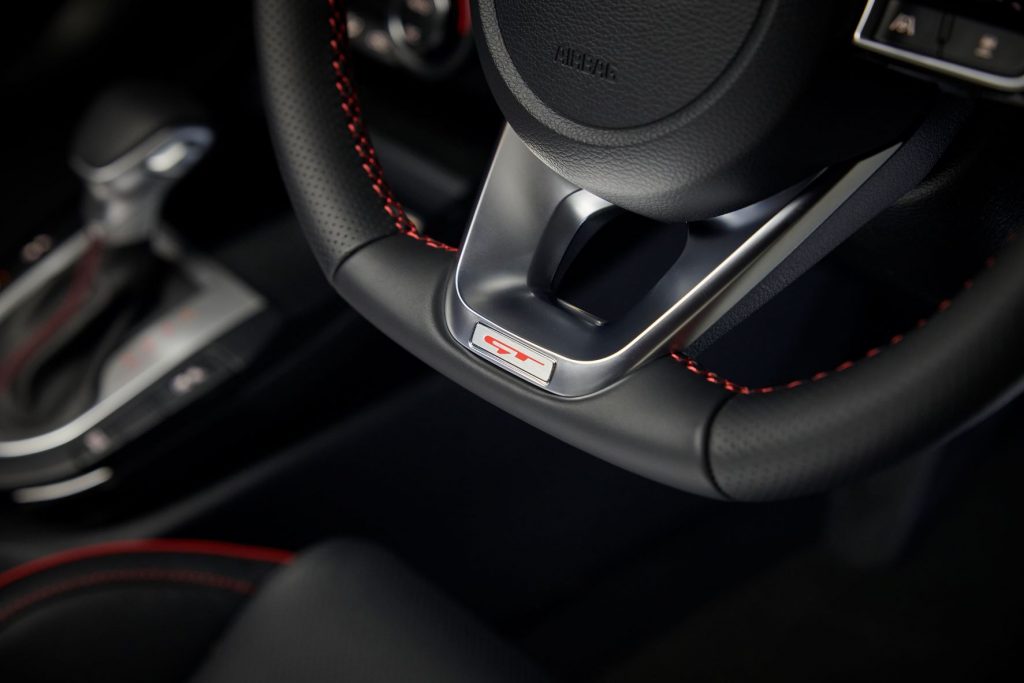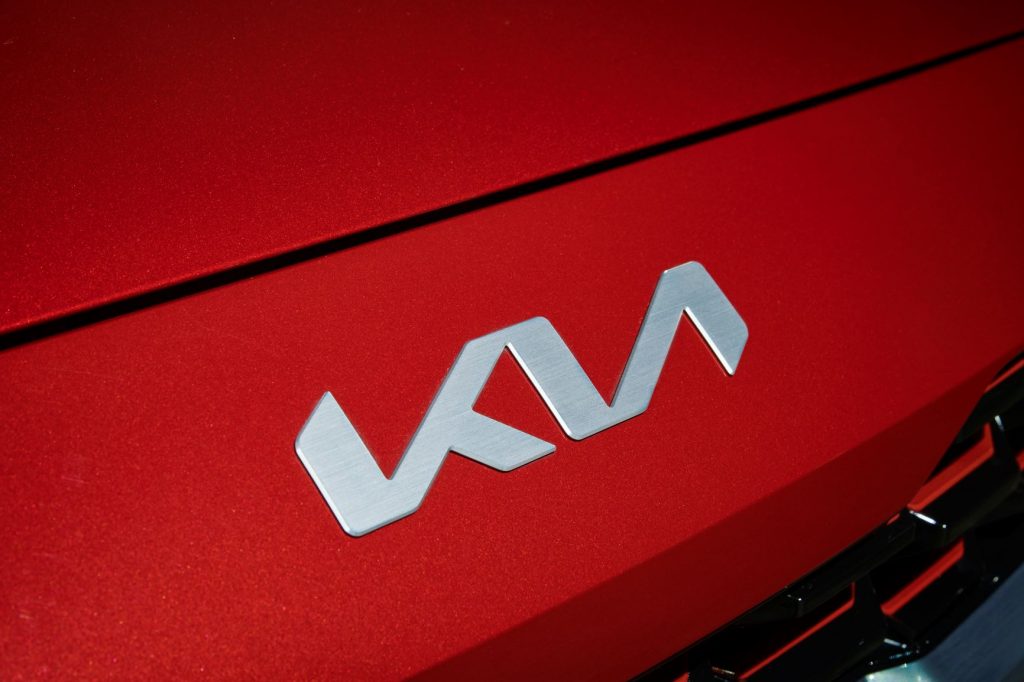Chris Riley tests the 2022 Kia Cerato GT hatchback with pricing, specs, ride and handling, safety, verdict and everything the over-50 driver needs to know.
Summary: Despite a 15 percent price hike since it was launched, the Kia Cerato GT is a great alternative for those who can’t afford a Stinger.
2022 Kia Cerato GT Hatchback
Pricing: $35,790 (plus on road costs)
Premium paint: $495
Warranty: Seven-years, unlimited km
Safety: 5-star ANCAP
Engine: 1.6-litre turbo intercooled 4-cylinder DOHC petrol engine
Power: 150kW at 6000rpm
Torque: 265Nm at 1500-4500rpm
Transmission: 7-speed dual clutch automatic, front-wheel drive
Body: 4510mm (long); 1800mm (wide); 1440mm (high)
Weight: 1370kg
Towing capacity: 1100kg
Wheels: 18-inch alloy
Tyres: 225/40ZR18
Ground clearance: 135mm
Turning circle: 10.6mm
Fuel tank: 50 litres
Thirst: 6.9L/100km (unleaded 91 RON or higher petrol, E10 compatible)
Consumption on test: 7.1/100km (600km)
seniordriveraus consumption on test: 7.4L/100km (422km)
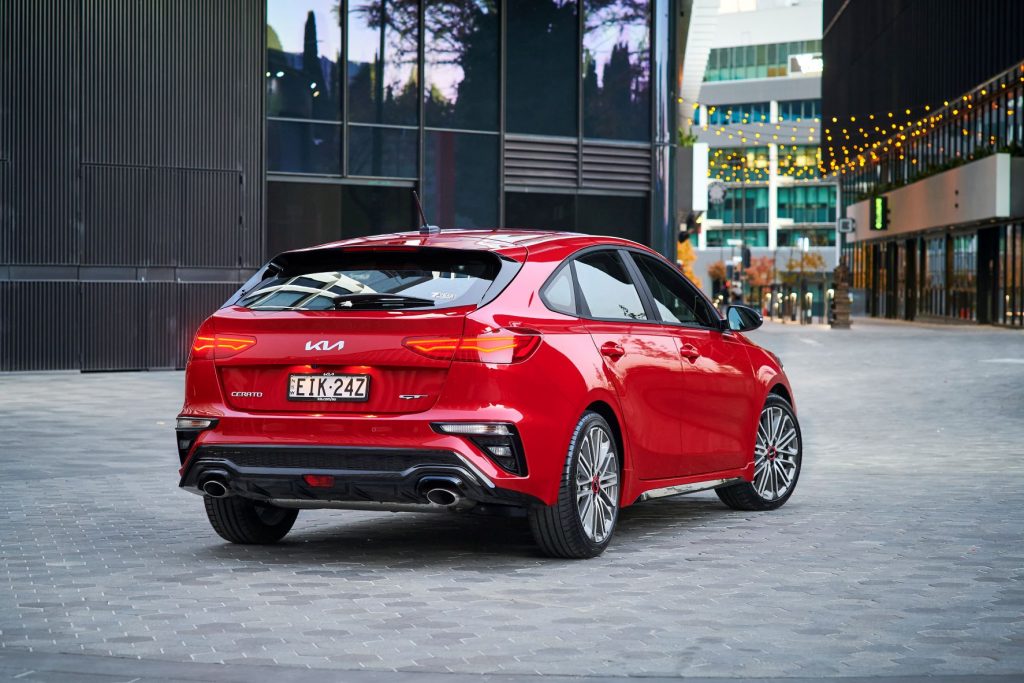
[review]
When you’re on to a good thing, it’s time to charge more for it.
At least that is the philosophy Kia seems to have adopted with its popular boy racer Cerato GT.
When the car was released three, or was it four years ago, it was $31,990 driveaway for hatch or sedan, an absolute bargain for the kind of performance it offered.
Cerato GT is still a good thing, but not the bargain it once was, as the price has steadily crept north. Nowadays, you’ll pay $36,990 – or about 15 per cent more for the same thing.
Just saying …
What’s it cost?
Cerato GT is a great alternative for those who can’t afford the Kia Stinger.
It’s not as big, nor as impressive to look at, but it certainly is Fun to drive with a capital ‘F’ – and that’s the all-important thing.
Now in its second iteration, with flashier, more radical styling, you get some added value for the extra five grand.
A top and tail sees restyled headlights, radiator grille, front bumper and fog lights, while the rear gets updated tail lights, boot and rear bumper lines – the sedan that is, the hatch stays largely the same.
GT now comes with a tilt and slide sunroof, electronic parking brake and rear occupant alert – at least I think that’s the size of it.
They’ve also done some further work on the suspension, but more on that later.
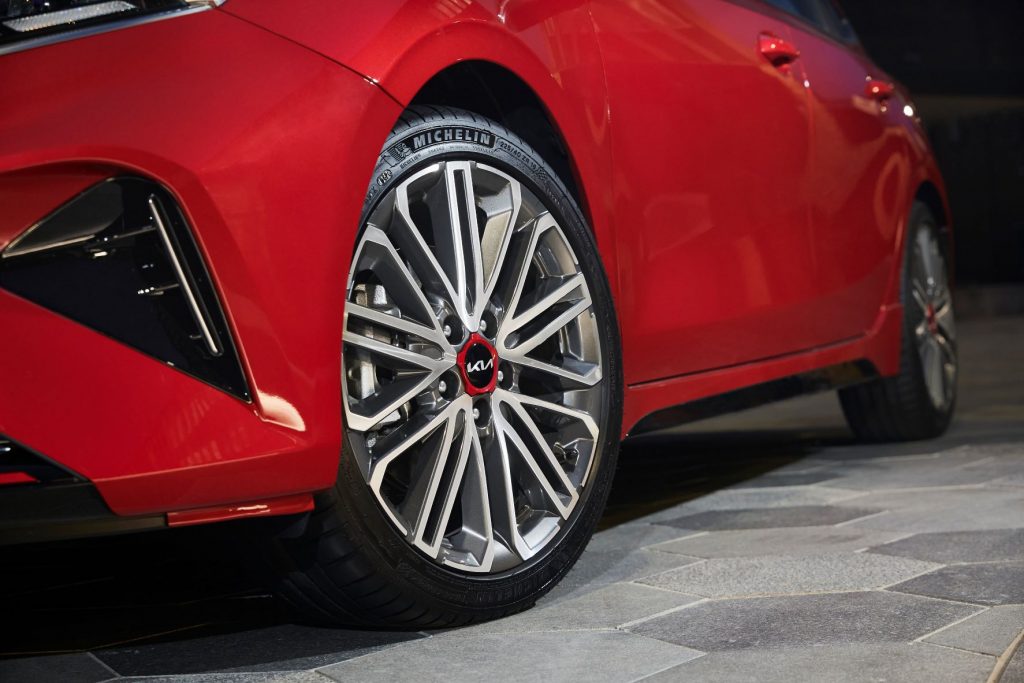
GT rolls on 18-inch alloys, with Drive Mode Select, speed limiter, 8-way driver seat adjustment with two memory positions, LED headlights, auto high beam, smart cruise control, climate air conditioning plus heated and cooled, leather appointed front sport seats.
Consulting the fine print and it says leather appointed “may comprise” of genuine leather (which, apart from anything else, is poor grammar, if Chris is quoting accurately), polyurethane and other man-made materials or a combination thereof (you never can tell).
Sporty bits include a body kit, dual exhausts, paddle shifters, alloy sports pedals and a flat-bottomed leather sports steering wheel.
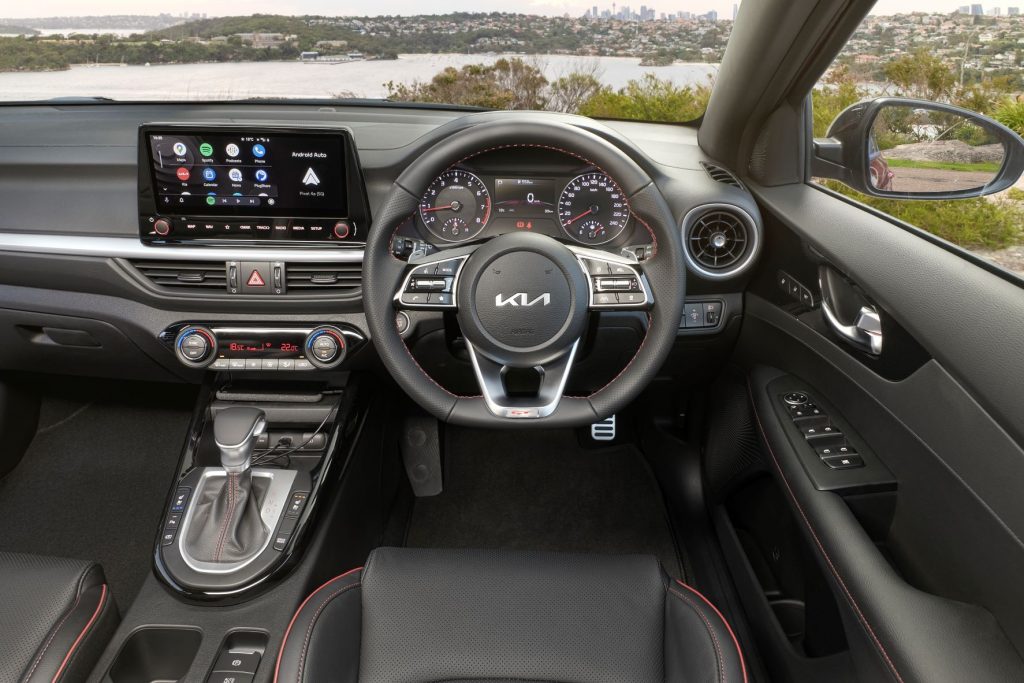
Infotainment consists of a larger 10.25-inch touchscreen and 8-speaker JBL audio, with Bluetooth, DAB digital radio, satellite navigation with 10-year map updates and SUNA live traffic updates, wired Apple CarPlay and Android Auto with voice recognition and a wireless phone charger.
Safety-wise the GT is right up there with six airbags, Auto Emergency Braking, with Pedestrian and Cyclist recognition, Forward Collision Warning, Lane Keep Assist, Blind Spot Alert, Rear Cross Traffic Alert, Rear View Camera, Driver Attention Alert, plus front and rear parking sensors.
For child seats three anchor points and two ISOFIX attachments are provided.
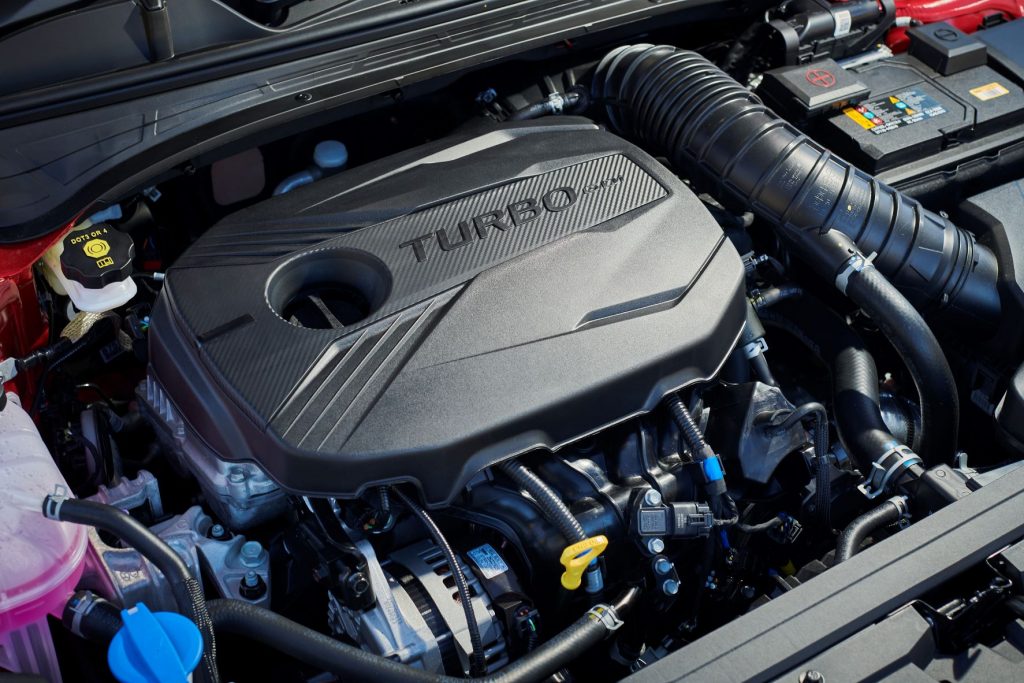
What’s it go like?
Our test car this time around was the hatch, although we prefer the look of the sedan.
The hatch also weighs about 25kg more, not much but as they say – every bit counts.
Regardless power comes from a 1.6-litre turbocharged four-cylinder petrol engine that produces 150kW of power at 6000rpm and 265Nm of torque from 1500-4500 rpm, with drive to the front wheels through a 7-speed dual clutch style gearbox.
Sorry, guys n’ gals – but there’s still no manual. In fact, the six-speed manual gearbox has been deleted from all models.
It’s the same engine that has been used in a growing number of models spanning the Kia/Hyundai range, most notably in the odd-bod three-door Veloster.
Cerato received a mid-life update in June last year and as part of that update, engineers did a bit more work on the suspension setup.
The enhanced sports tune, we’re told, is designed to provide a better balance of ride and handling, particularly when it comes to rough roads and stability in corners.
Fuel consumption is a claimed 6.8L/100km for hatch and 6.9L/100km for the sedan (both figures ironically better than the 7.4L for the standard 2.0-litre model).
There are four different drive modes too, with Smart, Eco and Comfort accessed via a switch – plus a hidden Sport mode of sorts.
Smart adapts to your style of driving.
Sport mode is accessed by pulling the gear shift towards you, which sharpens steering and delivers faster, more aggressive gear shifts.
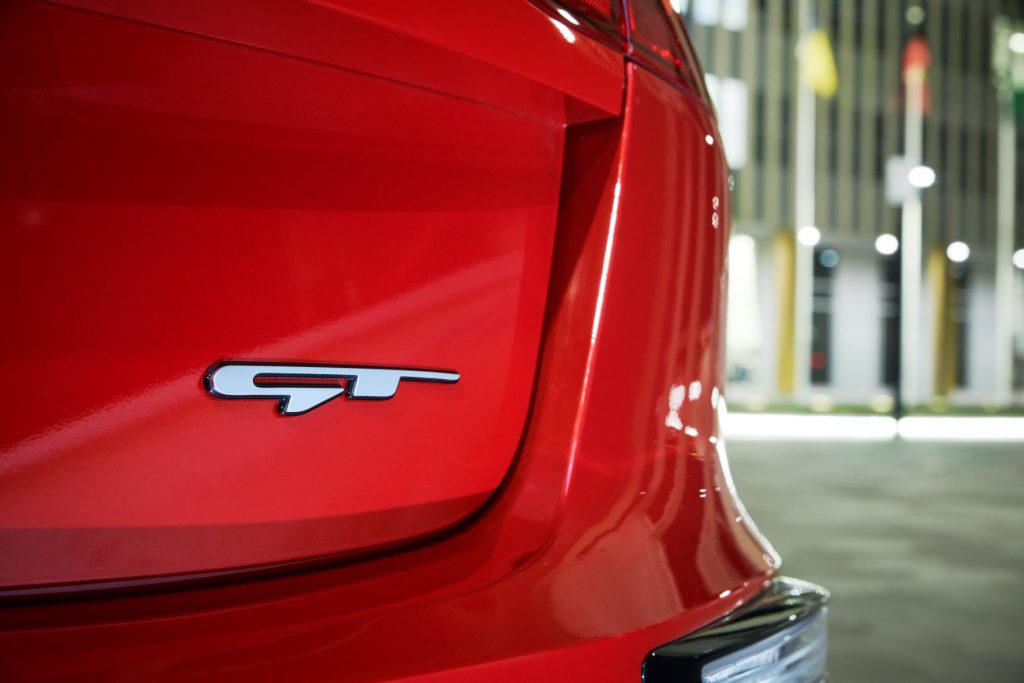
GT rides 10mm lower than a standard Cerato, with upgraded, independent rear suspension, to make it ride and handle better, particularly when driven with enthusiasm.
Larger 305mm by 25mm ventilated front discs are fitted, with 18-inch sport rims and grippy 225/40ZR18 Michelin Pilot Sport 4 rubber.
A space saver spare is provided.
Although there’s no manual change, the twin-clutch auto stamps its own character on the drive experience, offering fast seamless gear changes via steering wheel mounted paddles.
When you’re up it, the transmission stands ready to respond at an instant, but has a tendency to doze off after you have been cruising along for a while.
By that, I mean it takes a second or two to swing into action if you suddenly ask it the question – for instance to make a quick overtake.
GT’s steering carries over highlighting the difference between Normal and Sport modes.
The beefier brakes are more than up to the job, with plenty of bite even after repeated hard application going into corners.
Kia’s tuning gurus have done a remarkable job considering they started with a car that is little more than a shopping trolley.
But you pay for it as a daily driver with a ride that is quite firm with little suspension travel to soak up bumps in the road.
In fact, compared to the car we drove in 2019, the ride is worse, suggesting the changes they made were targeted primarily at making it handle better – in other words further screwing down the suspension.
We were getting 7.1L/100km after close to 600km. Gotta like that.
It takes standard unleaded, but really you’d have to be crazy not to feed this one the good stuff – for the performance alone.
What we like
- Good looks
- Strong performance
- Excellent economy
- Rear air vents
- Wireless charging
- Long warranty
What we don’t like
- Price creep
- No manual
- Ride not as good as we remember
- Needs to be serviced every 10,000km
Things over-50s need to know
To be honest, I think the car has lost some of its appeal, either that or the rest of the market has caught up.
Given the choice, I’d opt for the original suspension setup which I reckon was more compliant, especially as a daily driver.
On the plus side the GT still offers that rare combination of style, value and performance that doesn’t come along very often.
As far as user friendliness goes, a mate of mine (now deceased) was red hot to buy one of these cars.
He was 70 and was coming off a Mazda3 MPS.
He had a bad hip and I tried to talk him into an SUV, something that would be a little easier to get in and out of – something with a bit of maturity.
Nevertheless, he knew what he wanted and he wanted a Cerato GT hatch and that’s what he bought.
The Cerato is after all a basic hatchback in its simplest form.
Sadly, he passed away not long after, but not before he got to do a couple of long drives in the car which he enjoyed immensely.
His only problem was in understanding the workings of the car infotainment system, despite a free training session from moi.
I miss you Tony.
seniordriver comments
The Kia Cerato GT scores highly on almost every point, including delivering a lot of bang for (not very many) bucks. Of course, it was even better value when it was $31,990 driveaway, but now you’re paying significantly more (especially when you factor in on-road costs).
It proves (if proof were needed) that the Koreans are fast learners, and can meet the expectations of sporting drivers as well as they do for people who just want a car to get them from A to B.
Kia’s commendable work to tailor the suspension to Australian conditions by highly skilled specialists, delivers benefits to keen drivers, although as Chris points out, this does come at the expense of some ride suppleness, especially on rough roads. To be honest, we doubt that too many everyday drivers will stump up the extra for the GT, so perhaps the suspension tuning is aimed at the intended enthusiast market.
The move to auto-only, on the other hand, seems to fly in the face of aiming the Cerato GT at keen drivers. Or maybe that’s just us not moving with the times!
Most will appreciate the quite fruity exhaust note and the overtly sporty interior.
Once again, we’re calling out the lane keep assist and steering assist for being far too intrusive.
